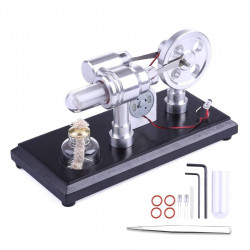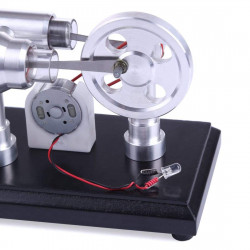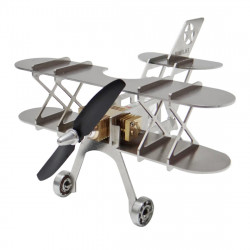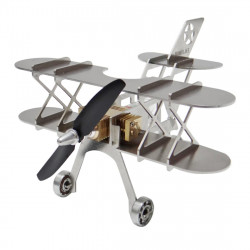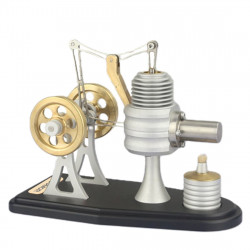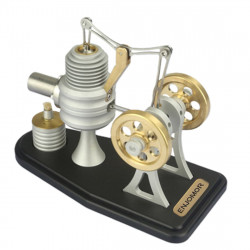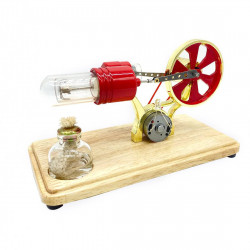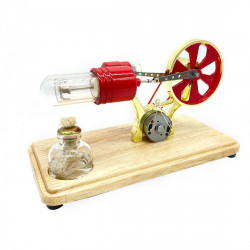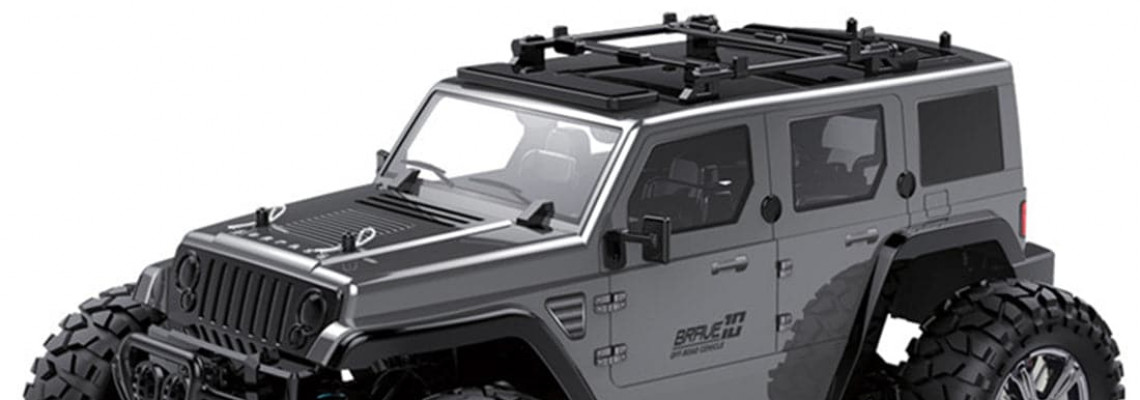
6 Tips for Operating RC Cars in Winter
Living in a cold climate and being an RC vehicle enthusiast, you are aware of how challenging it can be to maintain your passion throughout the protracted winter months. Cold temperatures, slick roads, and unpredictable weather can make it seem not easy to get your car on the track. Additionally, racing in basements and gyms can eventually become really dull. You can still drive your remote-controlled vehicles in the winter, so don't give up!
No matter what Mother Nature throws at you, you can keep doing what you love if you prepare and take care of it. Continue reading to get all the advice you need to operate snow in a safe and effective manner this winter.
HOW COLD IS TOO COLD FOR RC CARS?
Although this will ultimately depend on the materials your car is built of and how old it is, the good news is that many Traxxas RC cars can withstand temperatures below freezing (32°F). The engine type of your vehicle is the most crucial consideration while operating an RC car in cold weather.
Gas and Nitro Engines
Because gas and nitro engines are more difficult to start and tune, Traxxas itself advises against driving a nitro car below 35°F. As a result, these engines are typically the least tolerant of freezing conditions. Nitro fuel may begin to gel when the temperature drops below freezing, which could eventually damage the engine. To run correctly, this frequently calls for specific fuel ratios or additives, so be sure to consult your owner's manual for detailed instructions.
Electric Motors and ESCs
Conversely, RC cars with electric motors typically function better in colder climates, though even their operational efficiency may suffer. Because LiPo and NiMH batteries have somewhat varied optimal temperature ranges, the amount will vary depending on the type of battery you have. Generally speaking, you should anticipate a noticeable decrease in battery performance when the temperature falls below 20°F. Try to limit your use to days with at least some sunlight because your batteries are vulnerable to severe damage when the temperature drops below 0° F.
6 TIPS FOR HOW TO RUN RC CARS IN WINTER
Now that you are aware of your vehicle's safe temperature range let's move on to some more detailed advice on how to drive RC cars effectively and safely in the cold.
1. Check Your Owner's Manual
If there are any specific precautions for use in cold weather, you should consult the manufacturer's instructions before venturing outside for the first time. The most important thing to check before venturing into a wet and winter environment is whether or not the parts of your remote-controlled car are waterproof. You'll be sorry if you don't check to make sure your Traxxas shorts are out after just a few minutes of tearing through the snow, but almost all models include waterproof electronics.
2. Equip the Right Tires (or Treads)
Purchasing the appropriate tires is worthwhile if you intend to drive your remote-controlled car in icy weather. When making tight corners or climbing steep slopes, having the right rubber on your remote-controlled vehicle can make all the difference in the world. We advise upgrading to paddle tires or deep-terrain Traxx treads if you intend to travel past the compacted snow and into the fresh powder, even though many RTR vehicles come with very capable all-terrain tires. We do have tires for that, of course, if you want to lose a little control on the ice.
3. Warm Up Your Engine Before Heading Outside
This primarily affects gas and nitro RC cars because their engines are more impacted by cold temperatures than electric motors. Before venturing out into the chilly air, it is preferable to warm up a nitro engine indoors at a modest speed (or let it idle) until it reaches room temperature. This can help avoid any possible harm to the motor and guarantee that your remote-controlled car is operating at its best.
4. Prepare For a Shorter Battery Lifespan
In warmer conditions, you should anticipate that LiPo or NiMH batteries will drain more quickly than usual. This is because, like other batteries, they lose efficiency in colder temperatures, so if you intend to spend a lot of time in the snow, it's wise to have a spare battery on hand. Additionally, cold temperatures can cause the AA batteries that run a nitro vehicle's onboard electronics to die, which can result in extremely slow performance.
5. Beware of Hard Crashes
When doing complex maneuvers or acrobatics with your remote-controlled car in the winter, you should exercise particular caution. This is due to the fact that the cold air can make certain plastic parts extraordinarily fragile and more likely to shatter. Before you try any wild jumps or tight twists, remember that even the metal pieces are more likely to get damaged in the winter. Additionally, keep in mind that guardrails and softer barriers, like wooden planks, will have much less give if frozen through, so don't treat them the same way you would ordinarily.
6. Dry Your Car When You're Done
Lastly, after a day in the cold, remember to dry off your remote-controlled vehicle completely. This procedure is particularly crucial to preventing rust from forming on the metal components. To ensure that no extra water has gotten into any cracks or openings in the chassis, clean the vehicle first, then use a rag or towel to wipe down any metal parts. To further stop rust, use a thin layer of a moisture inhibitor (like WD-40). Your RC car will continue to look brand new for many seasons to come if you do this!
TAKE WINTER HEAD-ON WITH V8engineforsale
Now that you have these cold-weather operating tips at your fingertips, you can begin tearing up powder like a pro. You can be confident that your remote-controlled car will continue to provide you with entertainment long after you've lost feeling in your fingers and toes, regardless of whether you're driving on snow or ice.
